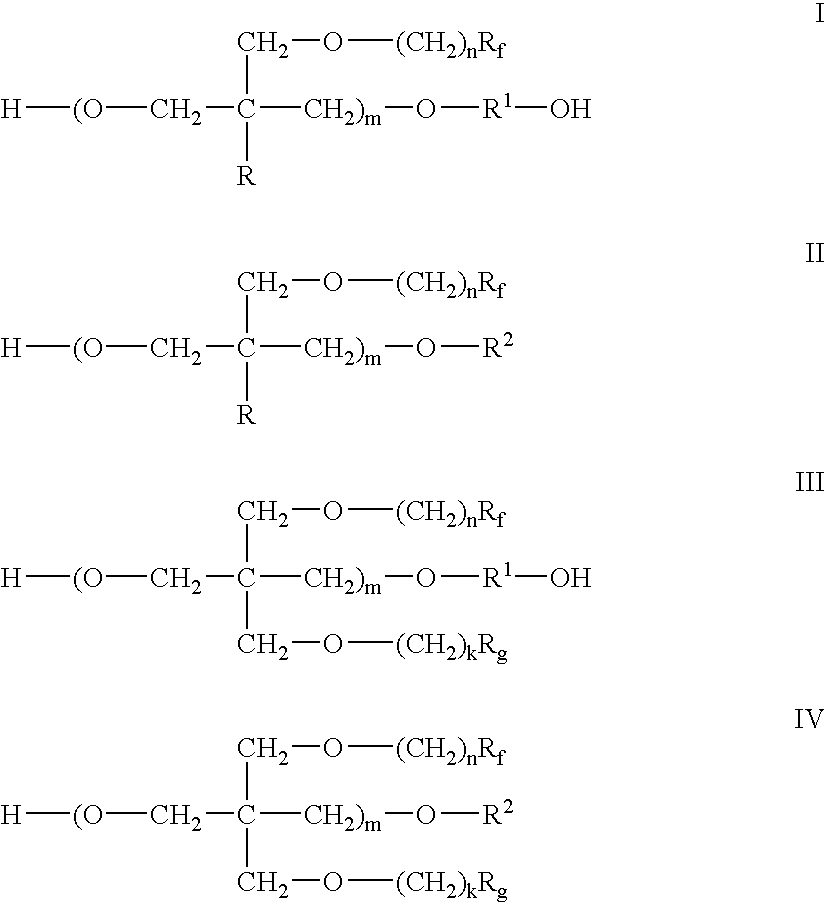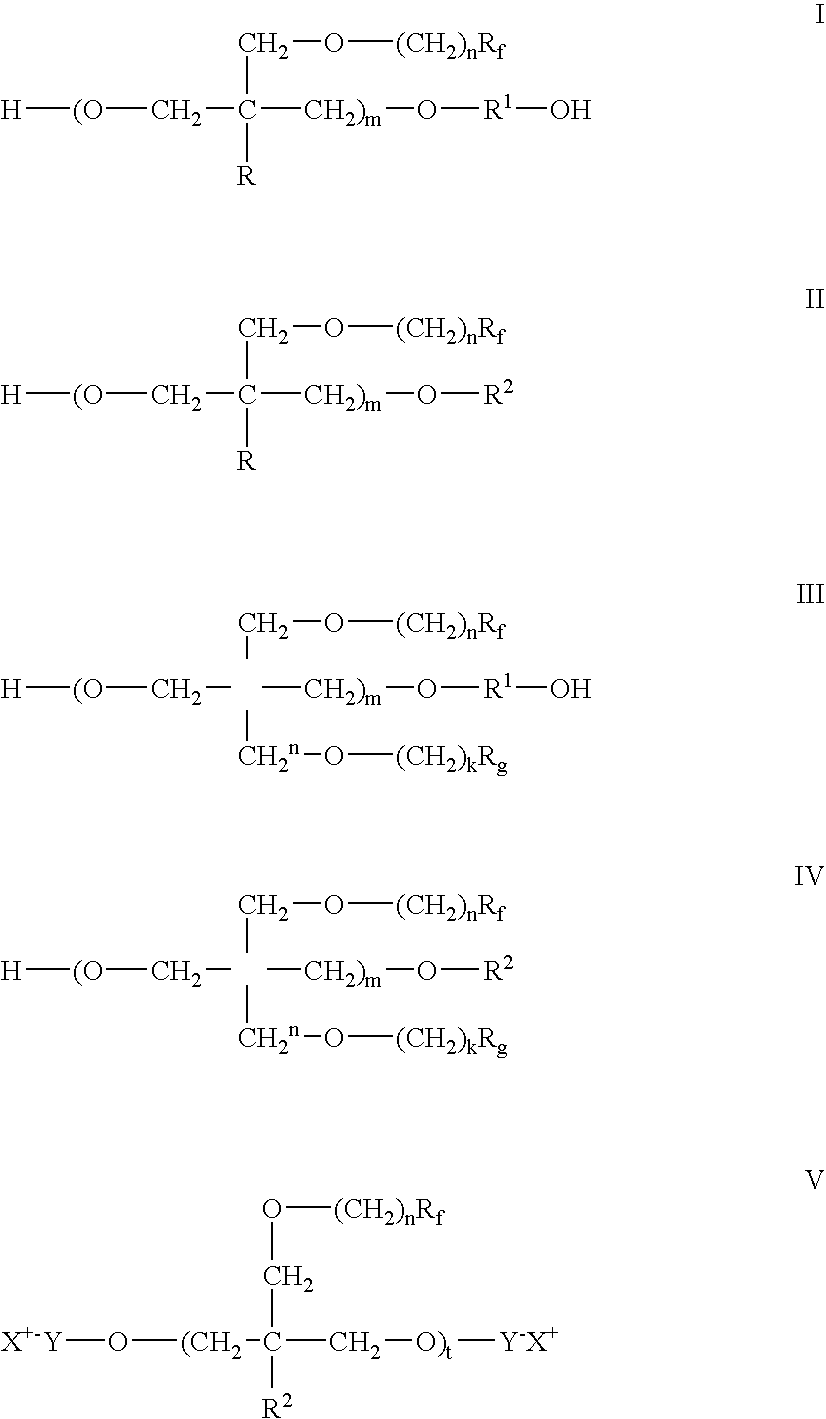Polymer-fluorosurfactant associative complexes
a technology of polymer fluorosurfactants and associative complexes, which is applied in the direction of detergent compounding agents, cleaning using liquids, other chemical processes, etc., can solve the problems of limited material choice, less suitable approach for submerged surfaces, and dissatisfactory consumers with the ability to prevent water and soil, etc., to improve surface protection properties, improve resistance and protection, and facilitate cleaning
- Summary
- Abstract
- Description
- Claims
- Application Information
AI Technical Summary
Benefits of technology
Problems solved by technology
Method used
Image
Examples
example 1
[0165]Example 1 illustrates the effect of compositional variations on the relative amount of fluorosurfactant adsorbed onto the Ge IRE surface achieved by employing treatment compositions, as shown in Table 1, of the present invention where the associative ratio, R, of the associative complexes are varied, in comparison to control compositions.
[0166]Table 2 summarizes the C—F band intensities due to adsorbed fluorosurfactant present as a result of the absorbed Type I associative complexes of Example 1 compositions. In these experiments, the IRE was exposed to the indicated treatment composition for 5 minutes, followed immediately by removal of the compositions and 20 rinses with deionized water, to remove any residual unabsorbed materials. Thus, the modification of the IRE surface was achieved without drying or curing of the treatment cleaner compositions, but rather only by the rapid spontaneous adsorption of the associative complexes of the present invention. As seen in Table 2, t...
example 2
[0182]Example 2 illustrates the effect of optional addition of a cleaning and / or dispersing aid to the inventive compositions with regard to the relative amount of fluorosurfactant adsorbed onto the Ge IRE surface. In this experiment, the IRE was exposed to the compositions shown in Table 3 for 5 minutes, followed immediately by removal of the compositions and 20 rinses with deionized water to remove residual unadsorbed materials. Results in Table 4 demonstrate that modification of the IRE surface was achieved without drying or curing of the cleaner compositions, indicating that the inventive associative complexes are rapid and spontaneous adsorbed onto the treated surface.
[0183]Without being bound by theory, it is believed that stable associative complexes of the polymer and the polymeric fluorosurfactant are formed in solution, and that an optional cleaning and / or dispersing aid, in this example a common nonionic surfactant present in the composition, can be used to adjust the amo...
example 3
[0186]Example 3 illustrates how the compositions can influence the relative amount of fluorosurfactant adsorbed onto the IRE surface and the kinetics of adsorption when the amount of the associative complex is increased and the associative complex molar ratio parameter, R, is varied in the presence of the optional cleaning / dispersing agent. In these experiments, the IRE was exposed to the cleaner formulation for different amounts of time, followed immediately by removal of the compositions and 20 rinses with deionized water, to remove residual unadsorbed materials.
[0187]Results shown in Table 6 demonstrate that the amount of adsorbed fluorosurfactant increases with exposure time for all formulations of Table 5, which is due to the thermodynamically favorable adsorption described herein above. Composition 10 has a relatively high R value, resulting in lower adsorption of fluorosurfactant at 5 minutes than in the case of other embodiments wherein the amounts of polymeric fluorosurfact...
PUM
| Property | Measurement | Unit |
|---|---|---|
| thickness | aaaaa | aaaaa |
| molar ratio | aaaaa | aaaaa |
| molar ratio | aaaaa | aaaaa |
Abstract
Description
Claims
Application Information
 Login to View More
Login to View More - R&D
- Intellectual Property
- Life Sciences
- Materials
- Tech Scout
- Unparalleled Data Quality
- Higher Quality Content
- 60% Fewer Hallucinations
Browse by: Latest US Patents, China's latest patents, Technical Efficacy Thesaurus, Application Domain, Technology Topic, Popular Technical Reports.
© 2025 PatSnap. All rights reserved.Legal|Privacy policy|Modern Slavery Act Transparency Statement|Sitemap|About US| Contact US: help@patsnap.com



